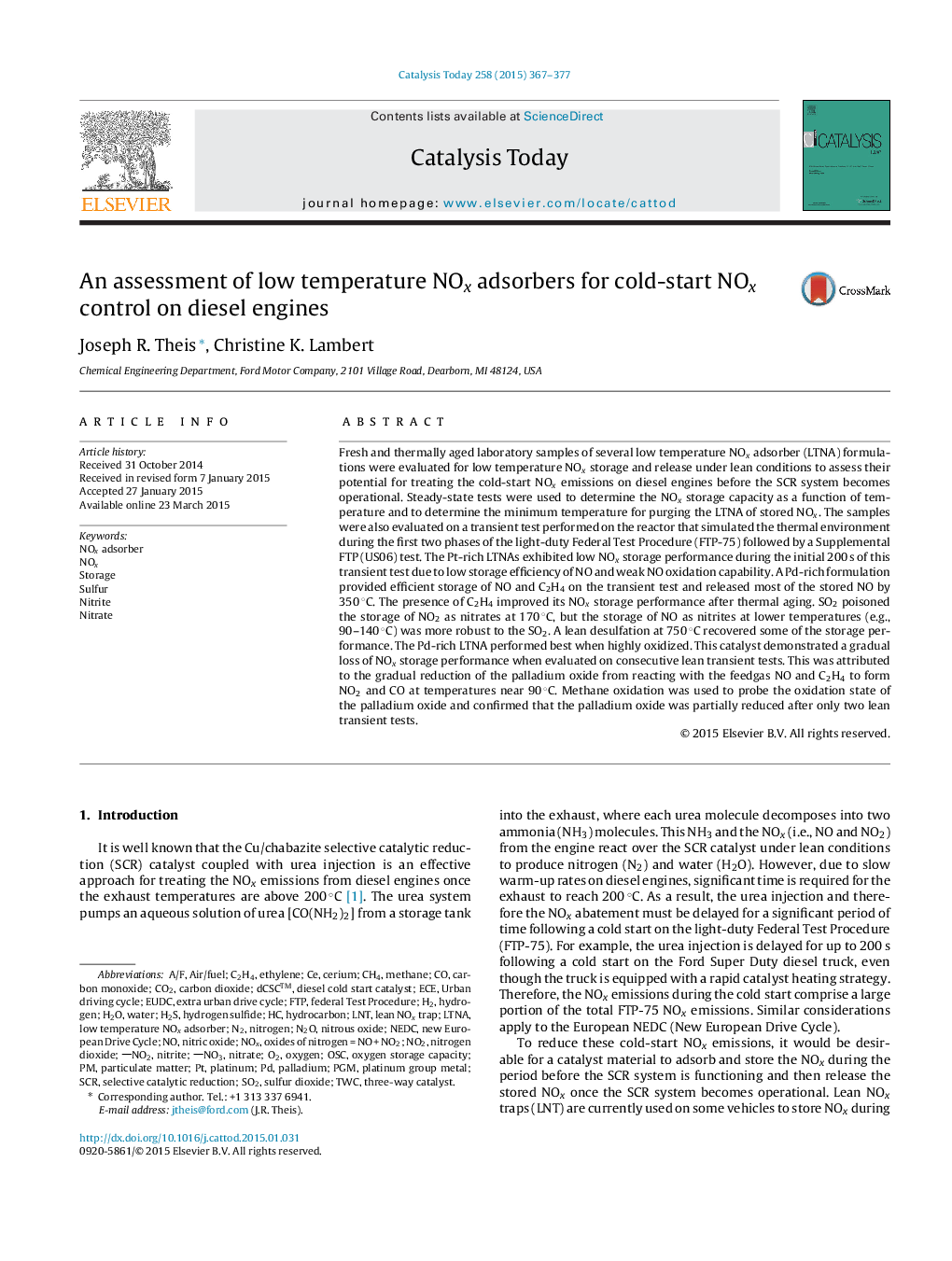| کد مقاله | کد نشریه | سال انتشار | مقاله انگلیسی | نسخه تمام متن |
|---|---|---|---|---|
| 53611 | 46977 | 2015 | 11 صفحه PDF | دانلود رایگان |

• NOx storage and release on Pt-rich and Pd-rich low temperature NOx adsorbers.
• Measured NOx capacity as function of temperature, determined minimum purge temperature, assessed NOx storage and release on transient temperature test.
• Pt-rich catalysts had low NOx storage performance due to poor storage of NO and low NO oxidation capability at low temperatures.
• Pd-rich catalyst had high NOx storage performance by storing and releasing NO.
Fresh and thermally aged laboratory samples of several low temperature NOx adsorber (LTNA) formulations were evaluated for low temperature NOx storage and release under lean conditions to assess their potential for treating the cold-start NOx emissions on diesel engines before the SCR system becomes operational. Steady-state tests were used to determine the NOx storage capacity as a function of temperature and to determine the minimum temperature for purging the LTNA of stored NOx. The samples were also evaluated on a transient test performed on the reactor that simulated the thermal environment during the first two phases of the light-duty Federal Test Procedure (FTP-75) followed by a Supplemental FTP (US06) test. The Pt-rich LTNAs exhibited low NOx storage performance during the initial 200 s of this transient test due to low storage efficiency of NO and weak NO oxidation capability. A Pd-rich formulation provided efficient storage of NO and C2H4 on the transient test and released most of the stored NO by 350 °C. The presence of C2H4 improved its NOx storage performance after thermal aging. SO2 poisoned the storage of NO2 as nitrates at 170 °C, but the storage of NO as nitrites at lower temperatures (e.g., 90–140 °C) was more robust to the SO2. A lean desulfation at 750 °C recovered some of the storage performance. The Pd-rich LTNA performed best when highly oxidized. This catalyst demonstrated a gradual loss of NOx storage performance when evaluated on consecutive lean transient tests. This was attributed to the gradual reduction of the palladium oxide from reacting with the feedgas NO and C2H4 to form NO2 and CO at temperatures near 90 °C. Methane oxidation was used to probe the oxidation state of the palladium oxide and confirmed that the palladium oxide was partially reduced after only two lean transient tests.
Figure optionsDownload high-quality image (134 K)Download as PowerPoint slide
Journal: Catalysis Today - Volume 258, Part 2, 1 December 2015, Pages 367–377